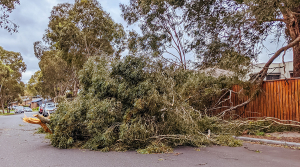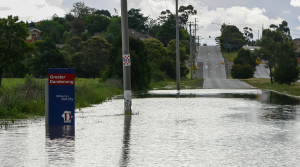Climate Change and Homelessness: Understanding the Connection
Climate change, like most natural disasters, impacts the vulnerable in the community with the homeless, or near-homeless, being the most vulnerable. This intersection of climate change impacts and homelessness is a critical issue that demands attention. The recently launched, Climate Change and Homelessness Research Project Report delves into this complex relationship, examining the lived experiences of homeless individuals and the multifaceted impacts of climate change on this vulnerable population.
You can download a copy of the Climate Change and Homelessness Research Project Report, produced by the Council to Homeless Persons (chp.org.au) here:
Pictured: Mark Furlong, report author
Homelessness: What is the ‘lived experience’?
Homelessness is obviously not just a lack of shelter; it is a profound experience marked by instability, insecurity, and vulnerability. The lived experience of homelessness varies widely, from rough sleeping to couch surfing, each form presenting unique challenges. Since the COVID-19 pandemic, the issue has been exacerbated, with more falling victim to the inability to secure stable housing. With extreme weather or related events, heat, drought, flood, fire, or coastal storm surges, we see a greater dispersal of populations and inevitably, more people finding themselves potentially on the path to becoming homeless.
Health impacts resulting from extreme weather events
Many communities and families have already been impacted by extreme weather events across Australia, but the health impacts compounded by homelessness are severe and multifaceted. Exposure to harsh weather conditions, lack of access to healthcare, and poor living conditions contribute to a range of health issues. Poor heating, inadequate shelter, and other risks are exacerbated by climate change, leading to deteriorating physical and mental health among homeless populations.
The problem is on the rise
Quantifying homelessness is challenging due to its transient nature. However, the incidence of homelessness has been on the rise, driven by economic instability, rising rent prices, and the direct impacts of climate change. Individuals and families are increasingly finding themselves without a place to call home.
Homelessness is not confined to any single location; it is a widespread issue. From urban environments to rural areas, the distribution of homelessness varies. Indigenous communities in northern regions face extreme heat and drought, exacerbating their already precarious living conditions. Environmental degradation and climate change have made traditional lands uninhabitable, forcing many into homelessness.
The face of homelessness is diverse. It includes individuals of all ages, backgrounds, and circumstances. Many are living in marginal and insecure housing, while others are in housing poverty or living in poverty itself. Homelessness is a continuum, with many just a step away from losing their homes due to economic and environmental pressures.
Community, vulnerability, and the impact of climate
Understanding the community’s vulnerability is crucial in addressing homelessness. Many communities spend the majority of their funding on responding to disasters rather than planning and prevention. The lack of resilience makes them more susceptible to the impacts of climate change.
Practical approaches and case studies
The report emphasises the importance of practical approaches and value of using case studies. By examining recent extreme weather events, such as floods and heatwaves, we can identify effective responses and strategies that can have a significant impact on reducing homelessness.
Raising awareness and funding for local community initiatives is essential. Urban environments are particularly affected by climate change, and resourcing rooming facilities adequately to address issues like rain, mold, and health problems is crucial.
Informing the future
The report aims to highlight the urgent need for coordinated efforts to address the intersection of climate change and homelessness. By raising awareness, securing funding, and implementing practical solutions, we can make a significant impact on the lives of homeless individuals and communities affected by climate change.
Stephen Farrell from Spatial Vision, was a member of the steering committee for this research work undertaken by Doctor Mark Furlong. In performing this role, Stephen drew on his work in supporting the South East Councils Climate Change Alliance (SECCCA) in its project to enhance the resilience of communities to climate change.
To find out more about the Council to Homeless Persons (CHP) and provide support, visit: https://chp.org.au/
Climate change and its impacts on homelessness
Climate change manifests in various forms, each impacting homeless populations differently. The report identifies the following expressions of climate change:
You may also be interested in…
Planning for climate change extreme weather events
Building capacity in the application of spatial technologies to better plan for and understand the consequences of anticipated climate change and associated extreme weather events for communities.
Enhancing climate resilience
The South East Councils Climate Change Alliance (SECCCA) engaged Spatial Vision to undertake an asset vulnerability assessment on selected assets and a financial review to assist member councils in better understanding and planning for the likely impacts of anticipated climate change.



